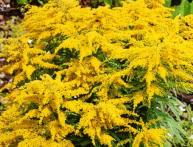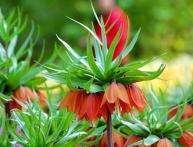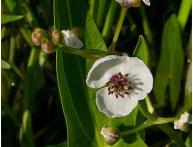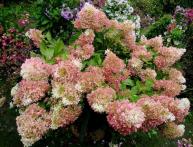Viola ampelous. Proper cultivation from seeds and flower care
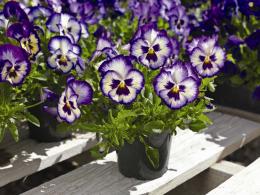
Viola The ampelous flower is a garden flower that can be either annual or perennial. Viola is a member of the violet family, so it should be planted in moist, well-drained soil. When planted, the ampelous violet forms a lush above-ground part with many bright flowers.
Content:
- Features of the ampelous viola
- Preparing to grow viola
- Planting a viola
- Dive and landing in the ground
- Features of viola care
Features of the ampelous viola
The main feature of this species is the spherical shape of the bush, the height of which is twenty centimeters. During the flowering process, the plant is covered with uniform and bright flowers, which are also very fragrant. The leaves are quite narrow, often ovoid or oval in shape. At the beginning of flower development, it grows in a vertical direction, and later, at the beginning of flowering, the shoots fall down.
The average length of shoots is from forty to sixty centimeters. With good care of the viola, it begins to bloom early and for a very long time. The flowering period of ampelous viola begins in spring and ends just before frost. This type of violet is distinguished by high frost-resistant qualities. Very often, the flower is grown as an annual or biennial plant.
Preparing to grow viola
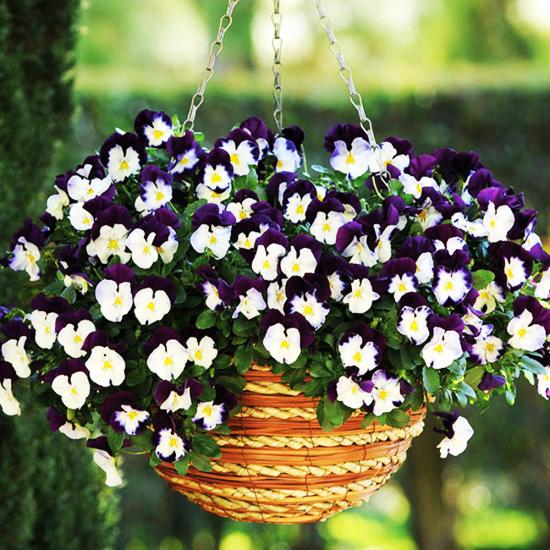
The soil for planting this plant should be moderately watered.The plant tolerates transplantation well, so if necessary, the flower can be safely transplanted to a new location. The flower responds well to moderate feeding with fertilizers, but under no circumstances should organic additives be added.
The planting location should be very sunny, with breathable soil. Flower viola seeds can be planted as early as July. The flowering of the plant can be observed as early as May next year.
There are also early sowings of flower seeds, which are carried out in February. In this case, sowing is carried out in closed ground. The soil, pre-fertilized with superphosphates, is placed in a container for landings. You also need to remember that the soil must be moist. In addition to the soil, the containers for planting also require preparation.
Containers with soil are prepared a week before planting. First of all, the container itself should be treated with a weak solution of potassium permanganate. Thus, the container is disinfected. To prevent acidification of the soil, a layer of small pebbles must be poured onto the bottom of the container. Pre-prepared soil consisting of soil, sand and humus is poured on top of the pebbles.
Planting a viola
With good care, ampelous violet blooms within fifteen weeks after planting the seeds. If a one-year growing cycle is planned, then the seeds are sown in February. In the case of growing this flower as a biennial, the seeds are sown at the end of June or at the beginning of July. Before planting a flower, you need to carefully check the soil, which must meet the following criteria:
- Nutritional value and fluffiness
- Good drainage
- Subacidity and neutrality
- Sufficient humidity level
Video about growing ampelous viola:
Further, seeds laid out on prepared soil and moistened with a spray bottle. The next stage is to give the planted seeds a greenhouse effect. To do this, the seed container is covered with plastic wrap and placed in a cool place for nine days. After this period, the first shoots appear.
After the leaves appear on the seedlings, diving can be done. When the seedlings are already sufficiently formed, they can be transplanted to a permanent place. In this case, you need to take into account the nuance that in order to develop good bushiness of flowers, when transplanting them you need to leave a certain distance between each other.
Dive and landing in the ground
Picking seedlings should be carried out two to three days after the plastic film has been removed from the container. The sprouts can either be transplanted into another container, or thinned out in the same container. The distance between the sprouts when diving should be at least six centimeters. After picking, viola sprouts are planted in the ground.
Replanting to a permanent location is best done in mid-May, when the ground is already sufficiently warmed up. Transplanting seedlings is carried out in several stages:
- Digging holes for each bush to a depth of six to seven centimeters.
- The distance between the finished holes should be about fifteen centimeters. This will allow the flower to grow to its full potential.
- Place small pebbles on the bottom of the holes and place the plant with a lump of earth.
- Falling asleep seedlings soil and abundant watering.
- It should be noted that the earth should not be compacted, and the plant should be watered at the root.
Features of viola care
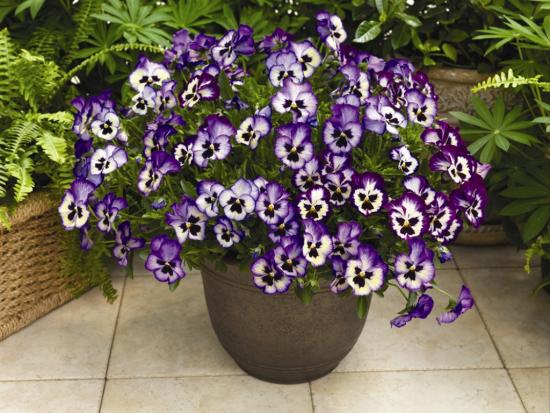
When a flower has already been planted, the gardener is faced with the task of care, which should lead to maximum flowering of the plant.Caring for an ampelous violet consists of the following steps:
- Daily moderate watering of the plant.
- Carrying out periodic fertilizing with mineral fertilizers. The frequency of fertilizers should be once every three weeks.
- Timely elimination of weeds that interfere with the normal growth and development of the plant.
- Loosening the soil.
- Warming a flower in the winter season. Straw, dry branches and spruce branches are used as insulation. It is these components that help preserve the root system during prolonged frosts.
- Carrying out trimmings.
This operation is carried out only in the second year after planting the viola. When pruning, leave a height of five centimeters from the soil level. It is necessary to remove only dried flowers and bushes that have lost their decorative qualities. Timely removal of dead plants ensures long-lasting and abundant color.




